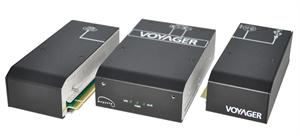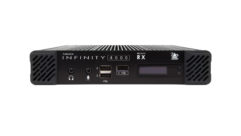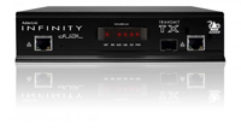

Fiber: The Next UTP?
AV pros have long recognized advances in the way they can deploy fiber-optic cabling. But certain system costs have continued to hold them back from deploying fiber.
Get ready, because copper is on its way toward becoming the exception rather than the rule in modern AV installations. At least that’s the consensus of a growing body of AV professionals who see hopeful signs in the development of new fiber-based technologies. It’s been discussed for a while now, but many believe fiber has reached a tipping point where the price and selection of products, bandwidth requirements for modern AV applications, and the industry’s digital migration all make fiber the right option more often than not.
“Five years from now, Cat-6 is going to be like coax. [People will say], ‘I guess you could use that, but nobody does anymore, ” says Brian Macauto, a Magenta Research sales engineer, who posed the question on Pro AV’s LinkedIn group, “Is fiber the next UTP?” For it’s part, Magenta has played a role in driving down the cost of fiber products. Like many other pro AV vendors, Magenta has seen enough of its customers using fiber that it’s been able to make a business case for expanding its fiber product lineup, which in turn drives more choice and efficiency.
That’s key, some integrators say, because a slim selection thus far has limited where and how they use fiber. There are only a couple of manufacturers that are offering a complete solution,” says Michael Bucklin, an AV associate at Shen Milsom Wilke, a New Yorkbased design consulting firm with offices around the world. “There are lots that have a widget here and there that will carry a signal across a piece of fiber, but very few have comprehensive switching systems.”
The tide’s changing as more companies see fiber as a real business opportunity. Fiber-optic cable costs have dropped to a point where fiber is highly competitive with copper media such as Cat-6. “The cost of fiber and the cost of copper are about the same in terms of the media itself,” says Jerry Dixon, who was a senior vice president at Liberty AV before becoming Extron Electronics’ national sales manager for rental and staging. “It’s the devices driving the fiber—the transmitters, receivers, and switching gear—that have raised the cost. If those [premiums] weren’t there, probably everybody would go to fiber.”
The premium is narrowing. Intel Corp.’s Light Peak initiative will help further seed the market by embedding fiber support on PC motherboards and videocards. The increased volume of that equipment should then drive down the cost of fiber electronics industrywide. Magenta says its new Voyager line of fiber switchers, transmitters, and amplifiers is an example of how electronics costs have already declined.
It’s only 1.3 times the cost of a typical analog install,” Macauto says. “That’s huge compared to a couple of years ago, when it was about 10 times.”
Practical Considerations
Economies of scale aside, with AV content what it is these days, fiber may be the only game in town. Fiber complements AV’s ongoing migration to digital and has the capacity to handle the proliferation of bandwidth-intensive applications, such as HD telepresence.
Many clients already have extensive, unused fiber infrastructures, while others require it. For example, in higher education, some integrators say they often light up the client’s dark fiber for use with digital signage. And for many government agencies and enterprises with high security requirements, copper often is forbidden because it’s far easier to tap into than fiber.
Newer types of fiber-optic cable, such as OM3 and OM4, are much more tolerant of tight bends and rough handling during installation. Some vendors also offer flexible conduit that’s already filled with fiber, eliminating an installation step.
But there’s still product development to be done. Bucklin says he’d like to see more products that let him hide the electronics that sit on either end of a fiber-optic cable. We can’t find very many wall plates in which you can fit a fiber transmitter. I’d like to see a better range of architecturally integratable devices.”
For many integrators, field termination has been a major turn-off, to the point that they’ve resisted using fiber. The first thing that really bothers integrators is how to terminate it,” says Dixon. “That seems to be the big hump to get across.”
But Dixon and others say they’re impressed by recent field-termination tools from vendors such as Belden and Corning. They terminated fiber as quickly as you can terminate a BNC,” Bucklin says of one demo he saw.
Macauto has been impressed by Corning’s kit, which indicates whether the termination has been done properly before the connector is crimped on. That’s huge because that means an integrator can successfully terminate fiber on their own and not question whether they have to hire a networking-fiber company to verify all of the fiber,” he says.
Success also requires staff with a thorough understanding of the fiber world, from basics such as the differences between single- and multimode cable to more advanced issues such as how those differences affect the ability to eavesdrop on the traffic flowing over the glass. Any AV integrator who wants to get his guys educated has plenty of resources,” Bucklin says. “Most should be able to get that training cheap, if not free,” which is another benefit of fiber finally hitting prime time.










